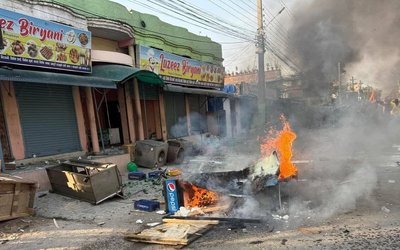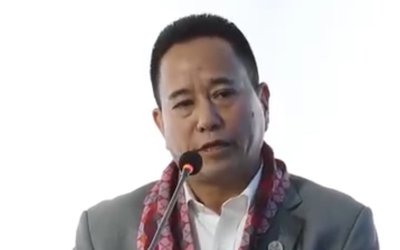More on News





Déjà vu
If you are a Nepali visiting Shimla, one thing that you instantly notice about this hill station is its similarity with Nepal. Shimla bears striking resemblance with the hilly areas of Nepal; Ilam to be precise. Not only the topography, the houses, the climate, language and even the people can easily be mistaken for a Nepali. Having visited Ilam just a year back, my trip to the East India company’s summer capital was like a déjà vu. Throughout the trip, I couldn’t stop myself invariably comparing the place to Nepal.
Pot-holed dreams
Delhi to Shimla is a nine hour bus ride. Unlike the Nepali highways, the Indian highways are well maintained; black topped throughout, with street signs and are brightly lit. A nine hour bus ride in Nepal would normally leave one with a sore backache, disturbed sleep, and a nasty stomach (courtesy Munglin’s food). But thanks to the highways in India, travelling by bus was a much comfortable affair. To my delight, I even found good restaurants on the way serving ‘Chawal and Dal’ much better than Munglin’s ‘Dal Bhaat’. En route, I marveled at the scene of beautifully decorated and brightly lit gurdwaras and temples even at midnight! As I lay relaxed watching the still world outside from my speeding bus, I pictured Nepal with all of these; a black topped road without potholes, well working street lights and embellished monuments. A sudden jolt of the bus awoke me from my imagination and I thought it better to concentrate on the comedy movie showing on the bus rather than plunge back into my dream again.
A Tiny Britain in India
Shimla was annexed by the British in 1819 after the Gorkha War. Lord Lytton, Viceroy of India initiated steps to plan the town from 1876. This scarcely habituated rural area would ultimately go on to become the summer capital of India, with the administration shifting twice a year, between Calcutta and this much cooler hill station. It is not surprising that the place still carries much of its British legacy and it is this reason which attracts a huge number of tourists. Right from the administrative buildings to the church, traces of European architecture is reflected everywhere. The Town hall, which is the main administrative building, reminds you of the typical 19th and 20thcentury British houses. The huge cathedral is no different from any other European church. The former Viceroy Lodge, now used as a research centre, is an absolute masterpiece. What stands out amongst all is the way in which the place is maintained. Not a single scrap of garbage or plastic waste can be seen and roads are swept almost throughout the day. Dust-bins are placed everywhere and even a public latrine is maintained like any other 5 star hotel restroom. Looking at the way India has tapped the specialty of Shimla to attract thousands of tourists every year, I only felt dejected on how we are wasting the potential of our very own ‘hill stations’ like Ilam and Palpa.
‘Grin’ Valley
I was advised by the hotel staffs not to miss out on a couple of places which were just an hour drive from Shimla. To my dismay, ‘Green Valley’ which was the first place I visited turned out to be nothing more than a mere sight of a sprawling hill with neatly cut and uniformly grown pine trees. I cursed myself for paying two thousand rupees to see something I could have seen from the balcony of my home! With an optimistic mind, I expected the second spot to be exciting. It was even more disastrous. After getting down from the taxi and riding a horse for half an hour, my guide takes me to a cliff where people have gathered to see a mountain peak! Now how often would a Nepali be excited to see a mountain, that too on a cloudy day?
‘Speed = Death Ahead’
As I cruised in my taxi while visiting a place nearby, a rather funny street sign caught my sight. The signal read ‘Speed = Death Ahead’. I wondered who had taken the pain of installing the ludicrous signal on the road. And with 70 kmph I only imagined if my driver had read the sign!





